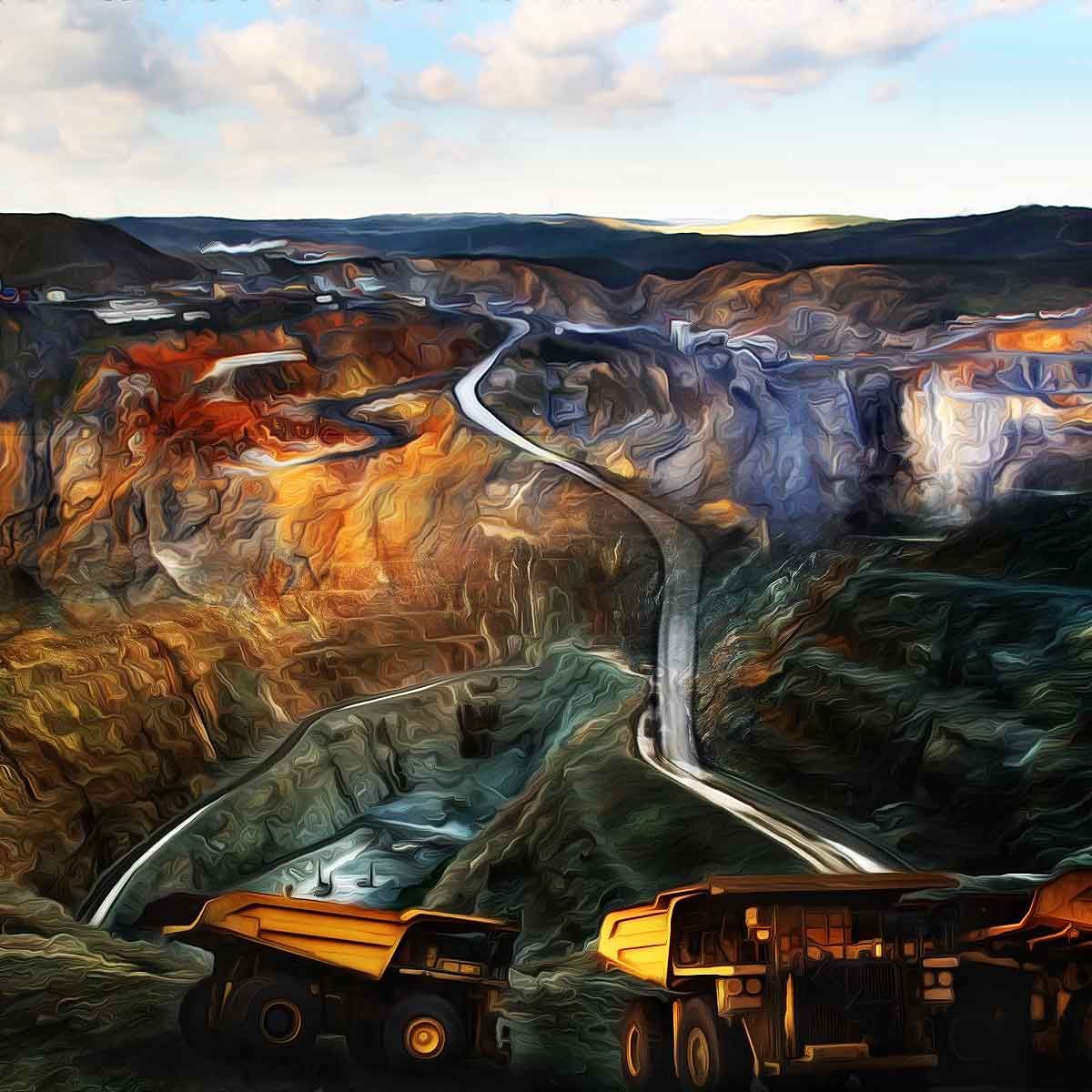More Coverage
Twitter Coverage
Satyaagrah
Written on
Satyaagrah
Written on
Satyaagrah
Written on
Satyaagrah
Written on
Satyaagrah
Written on
JOIN SATYAAGRAH SOCIAL MEDIA
“We know more about the movement of celestial bodies than about the soil underfoot": GSI made another significant discovery of lithium reserve in Rajasthan’s Degana (Nagaur) marking another milestone in India’s journey towards achieving net zero emissions

The Geological Survey of India (GSI) has made another significant discovery of lithium reserves in Rajasthan’s Degana (Nagaur), marking another milestone in India’s journey towards achieving net zero emissions.
|
While the capacity of the reserve has not been disclosed, media reports are citing Rajasthan’s government officials stating the state's reserves to be even larger than the previous find
These reserves are said to contain significantly more lithium than the 5.9 million tonnes found in Jammu and Kashmir recently.
Officials have claimed that the quantity of lithium found in Rajashtan can meet about 80 percent of the country’s demand and requirement. Lithium is the lightest as well as the softest metal across the globe. A nonferrous metal, it converts chemical energy into electrical energy and is one of the key components in EV batteries.
Often pegged as the ‘white gold’, lithium has emerged as a metal of priority even for India given its ambitious targets of achieving 30 percent electric vehicle sales of total new vehicle sales and increasing non-fossil energy capacity to 500 GW by 2030.
Ankit Kedia, Founder & Lead Investor, of Capital A said, "Lithium-ion batteries are by far the most efficient, safer, and lightweight battery options for the electric vehicles. This is where the discovery of Lithium reserves in different parts of India augurs very well for Indian EV ecosystem. It is true that the mere discovery of the Lithium reserves isn’t automatically going to change everything as we will need to build processing infrastructure and expertise. This is an area where countries like China and the US are far ahead of us in terms of sophistication and maturing of markets."
He further said, "At the same time, a start has to be made somewhere, and this potential of domestically produced Lithium usage in supporting the battery manufacturing industry and the overall EV ecosystem is huge. This would bring much needed encouragement in the domestic markets that have currently been affected by the withdrawal of the FAME II scheme. It must be noted that EV adoption in India has taken off in a big way and people are going to continue buying the EVs regularly when the holistic and supportive ecosystem is in place. That’s where I believe India has made great progress, and the recent discoveries of Lithium reserves will be highly instrumental."
|
As of now, India depends on imports for many minerals like lithium, such as nickel, and cobalt, and has been looking to strengthen its supply of these key minerals, which are otherwise crucial for furthering its plans to expand its electrical vehicle footprint.
At the moment, 47 percent of the world’s lithium production takes place in Australia, 30 percent in Chile, and 15 percent in China. But, 58 percent of the mineral’s processing takes place in China, 29 in Chile, and 10 percent in Argentina.
Varun Goenka, CEO & Co-Founder, Chargeup said, "As India discovers significant lithium reserves in Rajasthan, in addition to the previously discovered reserves in Jammu and Kashmir, the country is well positioned to become the 3rd largest market for EVs in the next 4 years. Batteries, being the single largest cost and supplies dominated by China, have been a major obstacle for India's EV industry."
"However, with the 'Make in India' initiative and the discovery of lithium reserves, India is now able to reduce its dependence on foreign countries and control the fluctuating price of lithium. This development not only enables India to meet its domestic requirements but also allows it to supply lithium to other countries, creating a promising future for the country's EV industry. The future seems #chargedup for India as it accelerates towards achieving its goal of transitioning towards sustainable energy sources while reducing its carbon footprint," he further added.
Lithium is a crucial raw material used in the manufacturing of batteries for electric vehicles, smartphones, and laptops. As the world shifts towards sustainable and clean energy solutions, the demand for lithium has skyrocketed, making it a critical component of the global economy.
The discovery of this new reserve in Rajasthan is a significant step towards India's goal of achieving energy independence and reducing its dependence on foreign countries for lithium. The exact size of the reserve has not been disclosed, but it is believed to be substantial.
The news of this discovery comes on the heels of India's ambitious target of achieving 100% electric vehicle sales by 2030. With the increasing demand for lithium-ion batteries, the discovery of this new reserve in Rajasthan could not have come at a better time.
|
Furthermore, the government has taken several steps to promote the production of electric vehicles and their components in the country. This includes providing incentives to manufacturers, reducing import duties on components, and setting up charging infrastructure across the country.
In February, the Centre announced that lithium reserves were found for the first time in the country, in Jammu and Kashmir.
The 5.9-million-tonne lithium inferred resources are in the Salal-Haimana area of the Reasi district in Jammu and Kashmir.
It was unearthed by the Geological Survey of India during a preliminary exploration (G3) stage.
Going global, too. By 2027-28, the world will produce 3,000 GWH batteries, according to estimates. India's new lithium reserves can make it a significant player in the worldwide supply chain, besides fulfilling its domestic demand.
This development not only enables India to meet its domestic requirements but also allows it to supply lithium to other countries, creating a promising future for the country’s electric vehicle industry.
To reduce India’s dependence on neighboring countries for lithium supply, the GSI has carried out 14 projects on lithium and associated elements in various states across India.
During 2021-22, the GSI has taken up five more projects on lithium and associated minerals. This strategic discovery of lithium reserves in India can help the country achieve its net zero emissions target by accelerating the adoption of green transportation and green energy.
In conclusion, the discovery of a new reserve of lithium in Rajasthan is a positive development for India's goal of achieving energy independence and promoting sustainable energy solutions. The government's efforts to promote electric vehicles and reduce dependence on fossil fuels are commendable, and this discovery will undoubtedly aid in achieving these goals.
Why is lithium important to renewable energy
Lithium is an essential component in many green technologies. It’s in rechargeable batteries, it’s in electric vehicles, it’s in watches, cell phones, laptops, and more.
But what is lithium and why are so many people critical of its use and extraction? Here’s all you need to know about the ever-growing lithium industry and the practices behind it today.
Lithium is a metal that is known for its low density, high energy-to-weight ratio, and its ability to store large amounts of energy. It’s also the lightest of all metals in the periodic table of elements, and its soft, silvery-colored metal is widely used for its heat-resistant properties.
Lithium is also a very old metal. In fact, scientists believe that it was one of only three elements to have been created in the Big Bang over 13.8 billion years ago – hydrogen and helium being the other two.
Though it’s one of the oldest elements to have been around, lithium is not nearly as abundant here on Earth as its gaseous counterparts. The metal makes up just 0.002% of the Earth’s crust, though arguably, that is higher than the supplies of tin, silver, gold, and platinum combined. Lithium doesn’t ever occur naturally in its metallic form as it's highly reactive to the elements and minerals around it. Rather, it’s found in a crystalline form alongside rocks and other mineral deposits in the Earth’s crust.
What do we use lithium for
Lithium was discovered in its crystal state back in 1817 by chemists examining petalite ore, though it was not put to use until the late 1940s when psychiatrists began to use it to treat mental afflictions. Its first modern widespread use was as a mood stabilizer in the mid-20th century, but lithium’s heat-resistant properties also saw the metal being added to soaps used to grease aircraft engines and other machinery during World War II.
Lithium is still added to glass and ceramic materials to bolster its heat resistance, but the main use for lithium nowadays is in batteries. Because of its high energy storage properties, lithium batteries can power small devices for long periods of time without overheating — things like watches, cell phones, laptops, tablets, remotes and more all use lithium batteries to keep them going for days, weeks, or years at a time.
More recently, lithium has been a central player in the development and production of renewable energy technology. Its ability to store energy has been crucial in capturing and storing energy created through wind, solar, and hydro power, and many pieces of machinery or technology have lithium batteries to maintain and distribute that energy long after the source has stopped producing energy. Solar-powered vehicles, for example, can only generate energy while the sun is out, but lithium batteries can continue to provide previously-generated energy after the sunshine is gone.
How is lithium mined
We use lithium commercially in its metallic form, but as we already mentioned, it doesn’t appear in that state naturally. It has to first be extracted, then separated from its other minerals, then turned back into its metal form.
Lithium is mostly found in brine pools, brine deposits, and mineral springs, all of which have high salt contents distributed through naturally occurring water. Salt deserts and brine pools in Australia, Argentina, Chile, China, and Bolivia are some of the most lithium-rich locations on the planet, as far as we know, and it is where a majority of the lithium mining occurs.
To extract lithium from these mineral-rich deposits, miners must drill deep holes into the deposits and pump the brine out into large, shallow pools where the liquid will evaporate from the solids. After a few months, all that is left of the liquid brine are large deposits of its minerals, such as borax, manganese, potassium, and, of course, lithium salts. From there, the mineral mixture is filtered and sent to another solar pool for a further 12 to 18 months.
At the end of this long, elaborate process, all that is left of the salty brine is the lithium salts, which can be processed back into their metallic form for commercial use.
References:
 Support Us
Support Us
Satyagraha was born from the heart of our land, with an undying aim to unveil the true essence of Bharat. It seeks to illuminate the hidden tales of our valiant freedom fighters and the rich chronicles that haven't yet sung their complete melody in the mainstream.
While platforms like NDTV and 'The Wire' effortlessly garner funds under the banner of safeguarding democracy, we at Satyagraha walk a different path. Our strength and resonance come from you. In this journey to weave a stronger Bharat, every little contribution amplifies our voice. Let's come together, contribute as you can, and champion the true spirit of our nation.
 |  |  |
| ICICI Bank of Satyaagrah | Razorpay Bank of Satyaagrah | PayPal Bank of Satyaagrah - For International Payments |
If all above doesn't work, then try the LINK below:
Please share the article on other platforms
DISCLAIMER: The author is solely responsible for the views expressed in this article. The author carries the responsibility for citing and/or licensing of images utilized within the text. The website also frequently uses non-commercial images for representational purposes only in line with the article. We are not responsible for the authenticity of such images. If some images have a copyright issue, we request the person/entity to contact us at This email address is being protected from spambots. You need JavaScript enabled to view it. and we will take the necessary actions to resolve the issue.
Related Articles
- Viral video shows Agra hospital owner admitting he switched off oxygen of critical patients, probe ordered
- Is Maha Vikas Aghadi alliance in Maharashtra on the verge of an imminent collapse?
- Kerala High Court slams state govt’s over 80% minority scholarship quota for Muslims, says legally not sustainable: Details
- Do they have permanent treatments for diabetes, hypertension and insomnia yet: Baba Ramdev fires 25 questions at IMA
- From joining ‘farmers’ protest to converting Rohingyas for Indian citizenship: How Christian groups have exploited the pandemic
- DRDO set to back in action with 'Agni Prime' test scheduled next week
- Haryana: Man burnt alive to make him ‘martyr’ against farm laws, villagers demand security from ‘farmers’ at Tikri border
- Not just wanting to use hospitals to convert Hindus, IMA Chief Johnrose Jayalal also harbours visceral hate for PM Modi
- ‘Don’t use IMA to propagate any religion’: Read what the Delhi court said slamming IMA President John Rose Jayalal
- India’s first Chief of Defence Staff General Bipin Rawat dies in helicopter crash: All you need to know
- Government of India gives Twitter "one last notice" as "gesture of goodwill" to comply with IT Rules, 2021
- The stand-off with Twitter is not about politics, it’s about a ‘messiah syndrome’: Twitter Vs GOI over free speech and local law
- India successfully carried out the test firing of a new missile of the Agni series known as Agni-Prime
- Just after the verification badge of VP of India was restored, Twitter removes verification of RSS Chief Mohan Bhagwat, bureaucrat
- Kejriwal Govt Inflated Delhi's Oxygen Demand By Four Times During Second Wave Peak: SC Oxygen Audit Team




























